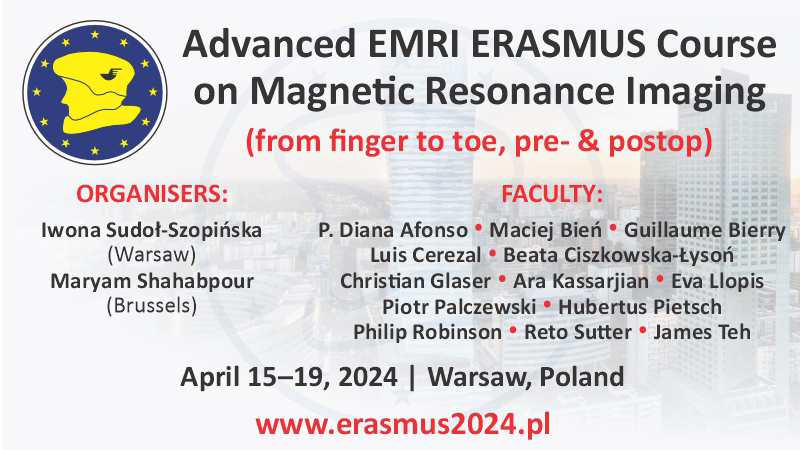Elasticity of the coracohumeral ligament in patients with frozen shoulder following rotator interval injection: a case series
David McKean1, Siok Li Chung1, Rebecca te Water Naudé2, Bernard McElroy3, Jonathan Baxter4, Aniruddha Pendse4, Joseph Papanikitas1, James Teh2, Richard Hughes1
 Affiliation and address for correspondence
Affiliation and address for correspondenceAim of the study: To evaluate changes in the elasticity of the coracohumeral ligament in patients with adhesive capsulitis of the shoulder treated with ultrasound-guided rotator interval injections. Methods: Shear wave elastography was used to evaluate elasticity of the coracohumeral ligament in symptomatic and asymptomatic shoulders in the shoulder-neutral position and 30° external rotation. A total of 24 shoulders were assessed. Symptomatic shoulders were treated with targeted steroid injection via the rotator interval and manipulation under local anaesthetic block. Follow-up assessment of the elasticity of the coracohumeral ligament was obtained at 10 weeks post-injection. Results: In all subjects, the coracohumeral ligament elastic modulus was larger at 30° external rotation than in the neutral position. In patients with adhesive capsulitis, the coracohumeral ligament thickness and elastic modulus was significantly greater in the symptomatic shoulder in the neutral position and 30° ER. Treated patients had an excellent response with improved Oxford Shoulder Score and reduced visual analogue scale pain scores. Median Oxford Shoulder Score was 13.5 pre-injection and 34 at 10 weeks postinjection. Median visual analogue scale pain scores measured 8.5 pre-injection, 3.5 at 1 day, 2 at 1 week, and 2.5 at 10 weeks. Improved Oxford Shoulder Score and visual analogue scale pain score was associated with a trend to normalisation of the elastic modus of the coracohumeral ligament. Conclusion: In patients with adhesive capsulitis of the shoulder, shear wave elastography demonstrated the coracohumeral ligament is stiffer in the symptomatic shoulder than in the unaffected shoulder. Treatment with the ultrasound-guided rotator interval injection is associated with improved Oxford Shoulder Score, reduced visual analogue scale pain scores, and reduced stiffness in the coracohumeral ligament.






